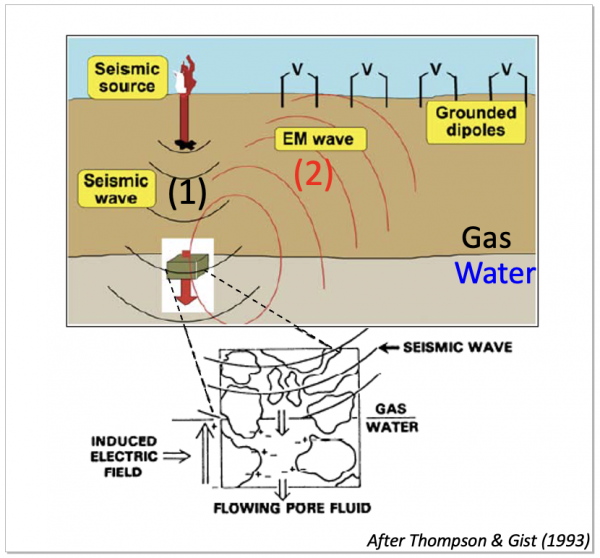Seismoelectric effects for subsurface characterization
Christina Morency
Lawrence Livermore National Laboratory

- Date & Time
- Location
- Online-only seminar via Microsoft Teams
- Host
- Fred Pollitz
- Summary
Classical approaches for Earth subsurface imaging rely predominantly on seismic techniques, which alone do not directly capture fluid-specific properties. On the other hand, electromagnetic (EM) measurements add constraints on the fluid phase through, for example, electrical conductivity. However, EM signals alone do not offer direct information of solid properties. In the recent years, there have been efforts to combine seismic and EM data for exploration geophysics. The most popular approach relies on joint inversion of decoupled seismic and EM data. However, by analyzing fully coupled poroelastic seismic and EM wave equations, one can capture a pore scale behavior known as seismoelectric effects (SEE) and more accurately resolve both solid and fluid properties.
I will present the equations used to model the seismoelectric response, which corresponds to electrokinetically couple Biot's poroelastic seismic and Maxwell's electromagnetic wave equations. To solve these equations, the spectral-element method (SEM) is used. The SEM, in contrast to finite-element methods (FEM) uses high degree Lagrange polynomials. Not only does this allow the technique to handle complex geometries similarly to FEM, but it also retains exponential convergence and accuracy due to the use of high degree polynomials. Finally, I will discuss the potential of the SEE technique for carbon storage sequestration and geothermal resources monitoring.
This work was performed under the auspices of the U.S. Department of Energy by Lawrence Livermore National Laboratory under Contract DE-AC52-07NA27344.
Closed captions are typically available a few days after the seminar. To turn them on, press the ‘CC’ button on the video player. For older seminars that don’t have closed captions, please email us, and we will do our best to accommodate your request.
 Jump to Navigation
Jump to Navigation